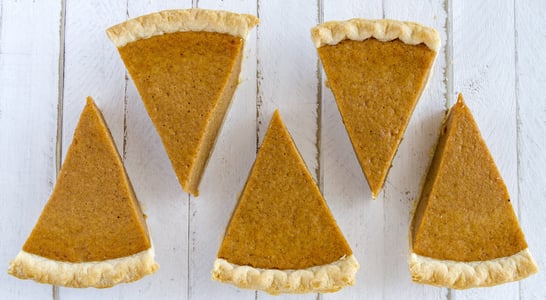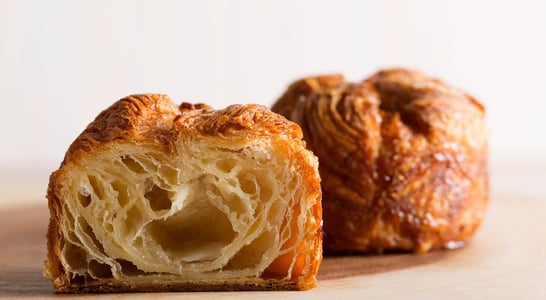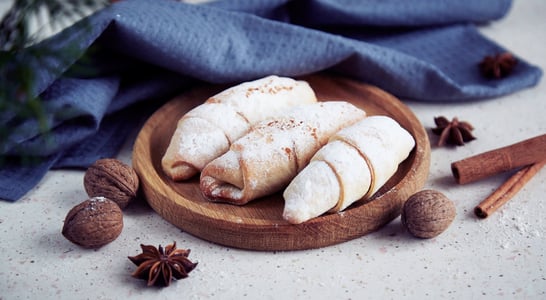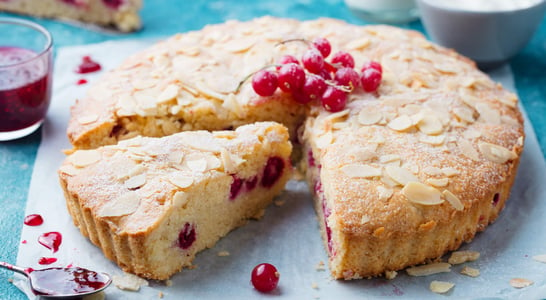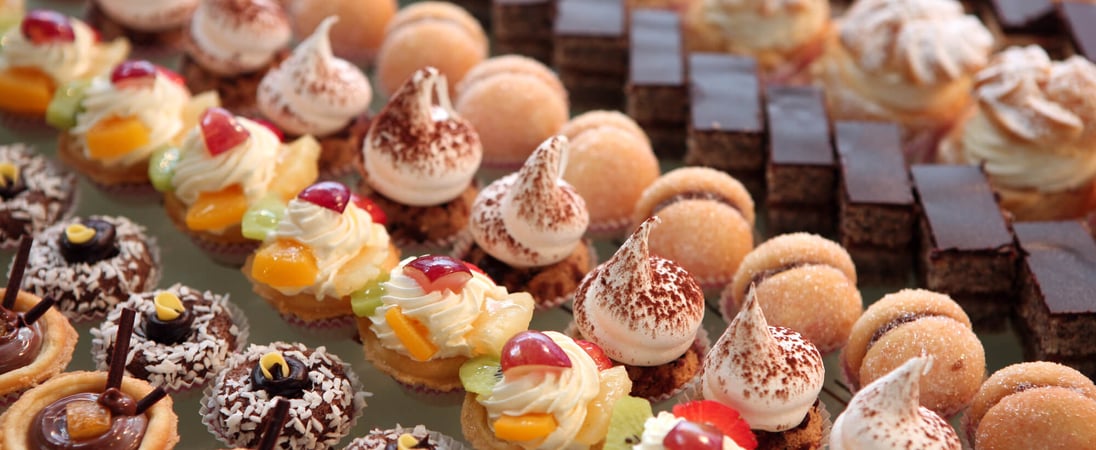
National Pastry Day
From filo to puff, Danish to baklava, savor flaky, buttery treats from your local bakery or attend a pastry-making class to learn from the pros.
For those who absolutely love pastries, their day is about to get all the more delicious! Now is the perfect time to observe everything delightful and tasty that has to do with National Pastry Day.
So for anyone who ever needs an excuse to grab a croissant before work or keep the hunger pangs at bay in the afternoon with a cheeky slice of apple pie, this day just hands that excuse to them on a silver platter!
History of National Pastry Day
The first ever pastries are believed to date way back into ancient times when the likes of the ancient Romans and Greeks made filo-style pastries as meals as well as treats.
The main ingredients found in pastries in these hot countries were flour, oil, and honey, which would not melt easily in the heat of the day.
In many cultures this has been carried forward and people still have these kinds of treats today. One of the most well-known is the Turkish favorite Baklava, a sweet pastry made from filo-type pastry, nuts, and delightful drizzles of honey.
In medieval times, things got a bit more serious when pastry chefs came on the scene, using shortening and butter to make a thicker, more robust pastry that is still frequently seen in pies. Pastry became quite the business, with demand for pies and sweets always high amongst royalty and peasants alike.
Because of its versatility, pastry has gone through many different versions and varieties expressed in many ways based on geography and culture, but its essence still remains mostly the same.
Throughout the years, plenty of pastry types have emerged; choux, danish, phyllo (which is more commonly known as ‘filo’ pastry), and on the back of that, hundreds of delicious pastry-based treats!
Pastry chefs are still a big thing, too. This is perhaps even more than they were back in medieval times. Employed in some of the biggest, fanciest hotels in the world, pastry chefs are in charge of making cakes and sweets and, of course, classic pastry desserts.
There’s no doubt that such a delicious foodstuff deserves its own observance, and that’s what National Pastry Day is all about!
How to Celebrate National Pastry Day
This day couldn’t be easier to find ways to celebrate it! Try out some of these interesting ideas or come up with creative ways of your own to enjoy National Pastry Day:
Enjoy a Pastry from a Local Bakery
Since National Pastry Day falls in the month of December, it’s an especially good time to find delicious pastries and baked goods at the bakery.
Pop into a local bakery and grab an apple turnover, a flaky pastry pie or perhaps a cinnamon roll.
The amount of pastries up for grabs is almost endless; vanilla slices, profiteroles, strudel, Danish pastries, pies with all kinds of fillings, baklava, quiche, eclairs, or even a Cornish pasty – there’s plenty to choose from no matter what type of meal a person is hungry for.
Try Making Pastry at Home
For those who are feeling adventurous, try making a pie or other type of pastry treat from scratch. Those who feel like they are quite the avid cook could even take a stab at the challenging filo or choux pastry!
One of the simplest pastries to make is a basic pie crust that can be filled with all kinds of different things, from fruit to a savory meat and gravy concoction.
With only three ingredients (flour, butter or shortening, and cold water) it’s not a complicated recipe at all. All that is required is to cut the cold butter into the flour with a pastry blender (or use two knives) until the pieces in the mixture are the size of small peas.
Then add the ice-cold water a spoonful at a time, carefully blending with a fork and adding more water until the pastry pulls away from the side of the bowl.
The key is to avoid overworking the pastry from this point or it will become tough. Plus, the colder the dough is, the flakier the crust will be.
Roll the pastry out into the desired shape, fill with delicious fillings (whether choosing sweet or savory), and bake until golden brown and flaky. Enjoy!
Take a Pastry Making Class
Those who don’t feel super confident in their pastry-making skills might consider taking a course at a local cooking school or community college.
Those who want to become full-fledged pastry chef will probably need a couple of years of training and then some apprenticeship experience before becoming a professional. But, many people take culinary courses just for the fun of it!
In a pastry-making class, students will learn various skills, such as:
- Baking and Pastry Arts Skills. Learn how to take basic recipes and execute them in a way that causes mouths to water
- Recipe Development and Execution. Following a recipe is great, but learning how to be creative and make your own is even better.
- Attention to Detail. Whether measuring ingredients, clarifying oven temperatures or separating eggs from yolks, the key to making pastry is in the details.
- Time Management. One of the most important skills in the kitchen is getting the timing right so that everything comes out when it should.
Share Pastry Treats with Loved Ones
No matter what, be sure to enjoy these sweet or savory treats with various friends, neighbors, family or workmates. Or eat all of them to yourself – it will be our little secret!
National Pastry Day FAQs
Did you know that the croissant, often associated with France, actually has Austrian roots?
The croissant’s origins trace back to the Austrian kipferl, a crescent-shaped roll. In the 17th century, Viennese bakers crafted the kipferl to commemorate a military victory.
The pastry made its way to France in the 18th century, where it evolved into the buttery, flaky croissant we cherish today.
What is the significance of the ‘Paris Pastry Guild’ established in 1440?
The Paris Pastry Guild, formed in 1440, was a pivotal organization that standardized pastry-making techniques and elevated the profession’s status in France.
This guild played a crucial role in refining pastry arts, leading to the sophisticated French pastries we enjoy today.
How did a bakery workers’ strike in Denmark lead to the creation of the ‘Danish’ pastry?
In 1850, Danish bakery workers went on strike, prompting bakery owners to hire foreign labor, including Austrian bakers.
These bakers introduced new pastry recipes, which Danish bakers later adapted, resulting in the creation of the beloved ‘Danish’ pastry.
What is the story behind the invention of puff pastry?
Puff pastry, known for its light, airy layers, was first introduced in 1788. This technique involves folding dough with butter multiple times to create delicate, flaky layers, a method that has become fundamental in pastry-making.
How did the Industrial Revolution impact the accessibility of pastries?
The Industrial Revolution marked a significant shift in pastry production.
Advancements in technology made pastries, once exclusive to the upper classes, more accessible and affordable for the masses, leading to the widespread popularity of various pastry types.
What are some unique pastries from around the world?
Pastries vary globally, reflecting diverse culinary traditions. For instance, Italy’s cannoli are tube-shaped shells filled with sweetened ricotta cheese, while Greece’s baklava consists of layers of filo pastry filled with nuts and sweetened with honey.
In Denmark, the ‘Danish’ pastry is a popular treat, often filled with fruit or custard.
How did ancient Egyptians contribute to the history of pastries?
The ancient Egyptians made simple pastries using grain meal and flour, sweetened with honey.
These early pastries were often enjoyed dipped in wine, showcasing one of the earliest known forms of pastry consumption.
What role did French and Italian Renaissance chefs play in pastry development?
During the Renaissance, French and Italian chefs perfected puff and choux pastries.
Their innovations led to the creation of delicate pastries like Napoleons, cream puffs, and éclairs, which remain popular today.
How do different cultures incorporate pastries into their culinary traditions?
Pastries are integral to many cultures, often featured in celebrations and daily life.
For example, in the Middle East, baklava is a staple dessert, while in France, croissants are a breakfast favorite. In the United States, pies with various fillings are common at gatherings and holidays.
What are some fun ways to celebrate National Pastry Day?
Celebrate by visiting a local bakery to enjoy a variety of pastries, or try your hand at making pastry dough from scratch at home.
Engaging in baking can be a rewarding experience, allowing you to create and enjoy your own delicious treats.
See what else is happening…
There’s always more going on every month at Days Of The Year. Here are our favorites this month!
Also on ...
View all holidaysWorld Techno Day
With pulsing beats and synths that transport you to another dimension, techno music is a force to be reckoned with.
National Llama Day
With their friendly demeanor and fluffy appearance, llamas make great pack animals and even therapy animals due to their calming presence.
Christmas Card Day
A tradition that brings joy — with so many unique designs to choose from, it's easy to find the perfect way to spread holiday cheer.
International Day of Veterinary Medicine
Caring for our furry friends is a serious responsibility, and veterinary medicine is the key to keeping them healthy and happy.
We think you may also like...
Butterscotch Cinnamon Pie Day
After it was invented in the 2015 pixelated video game Undertale, fans set out to create the Butterscotch Cinnamon Pie in real life. Try it, it’s worth it.
National Kouign Amann Day
Kouign Amann is a pastry-like cake made with an insane amount of butter—and therefore is incredibly delicious. Visit a bakery or try making your own at home.
National Cinnamon Crescent Day
Flaky layers of pastry that are filled with a sweet, cinnamon filling, making them a tasty crowd-pleaser — perfect for breakfast or dessert!
National Bakewell Tart Day
Savor the exquisite blend of almond-infused goodness in a dessert that epitomizes the perfect harmony of flavors.




